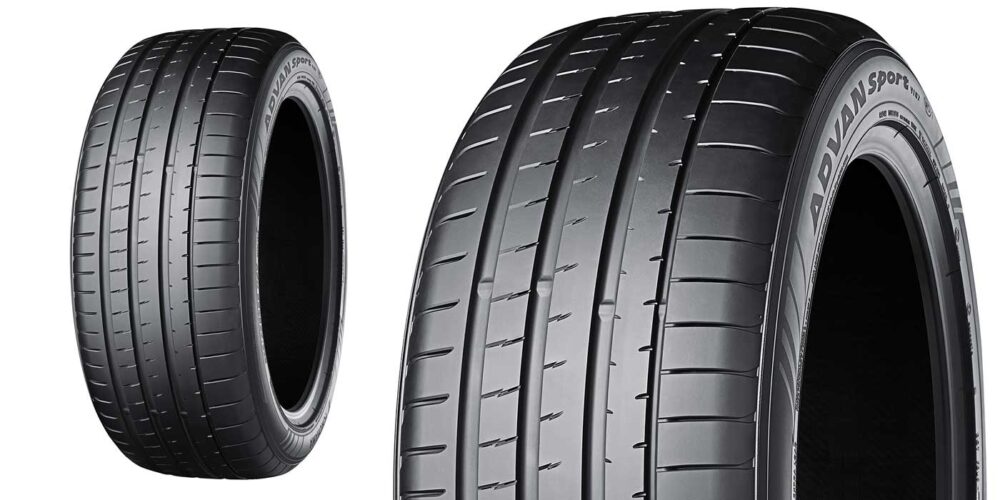 In the August issue of Tire Review, I began to address Corporate Average Fuel Economy (CAFE) standards for vehicles sold in the U.S. and what the legislation means for the tire industry. Now we’ll take a deeper look at how tire manufacturers are responding to changing legislation – and consumer demand – with their own “green revolution.”
In the August issue of Tire Review, I began to address Corporate Average Fuel Economy (CAFE) standards for vehicles sold in the U.S. and what the legislation means for the tire industry. Now we’ll take a deeper look at how tire manufacturers are responding to changing legislation – and consumer demand – with their own “green revolution.”
To recap, in 1975, the federal government introduced CAFE standards to improve the average fuel economy of cars and light trucks sold in the U.S. At the time, OPEC fuel embargoes wreaked havoc. Consumption was high, and passenger vehicles were physically large and thirsty.
With the aim of regulating the automotive industry to build and sell more fuel-efficient cars and light trucks, Congress’ new-for-1975 fuel economy standards worked to decrease the U.S.’s dependency on foreign oil and reduce consumption of the fuel that powers our vehicles.
The standards are regulated by NHTSA and tested by the EPA. The EPA tests the OEM’s fleet fuel economy average. Each vehicle contributes to the average miles per gallon of the fleet’s harmonic mean to achieve the fleet’s total miles-per-gallon status.
Changes wrought by the new CAFE standards were evident in the shift in designs and materials used by U.S. and import automakers for American consumption. Cars were designed with more fuel-efficient engines, lighter chassis and smaller overall footprints. Luxury coupes such as the Monte Carlo, Cordoba and Thunderbird were signs of the times in the mid-’70s – themselves a downsizing from the extra-large sedans Ford, Chrysler and GM had sold by the millions until then. By the end of the 1970s, slightly smaller, intermediate coupes were sharing lot space with an increasing number of econoboxes – small sedans, wagons and downsized trucks.
Wheel diameters started at 13 inches and went to 15 inches for large sedans and luxury cars, and bias ply tires soon made way for better-performing radials.
Computerized engine controls came to fore, and carburetors were replaced with electronic fuel injection. By 1990, fuel mileage increased to 27.5 mpg from the basement of 18 mpg in 1978, during the first year of regulation.
Until recently, fuel economy standards as regulated by CAFE hadn’t increased since 1990. For the past 20 years, 27.5 mpg has been the magic number. However, in 2007, President Bush signed the Energy Independence and Security Act into law. The new law required that automakers increase their fleet mileage averages for cars from the 1990 level to 37.8 mpg by 2016, and that truck averages must increase from 23.5 mpg to 28.8 mpg. The Obama administration is requiring OEMs to reduce the CO2 output of their fleets in order to reduce greenhouse gas emissions.
On Oct. 1, the U.S. government said it may impose a new set of fuel economy standards for automakers requiring of 62 mpg for cars and light trucks by 2025, even though OEMs claim the increased costs to consumers could equal as much as $3,500 per vehicle. In addition, the Obama administration announced it is considering increases of between 3% to 6% starting in 2017.
Tires Play a Role
An obvious way to increase a vehicle’s fuel mileage is to decrease its rolling resistance. The tire industry has advanced technology by leaps and bounds in the last 30 years. Advances in tire compounds, tread design, construction and materials, as well as manufacturing processes, have contributed to greater fuel economy, better handling, noise control, traction and treadwear for OEMs and consumers alike.
As the tire evolves, so does the consumer. Now, consumers demand high levels of performance in every application, and they want a longer wearing, lower rolling resistance tire that can deliver peak performance in any season on any surface at an affordable price.
Add to that the demands of the green revolution taking place in the market today – some consumers seek not just better performing tires, but more eco-friendly products, as well – and tiremakers now have the dual responsibility to deliver high performance tires that are also environmentally sustainable. The advent of highly aromatic oil-free compound tires has altered the tire landscape – and will for years to come.
Companies now are leading the way into the epoch of green performance. Pirelli has pledged that 40% of its products will be eco-friendly by 2012, while Hankook has pledged “green growth” for its next generation of tires featuring “Hankook Tire’s Lifestyle of Health and Sustainability” (H-LOHAS) with the aim of reducing petroleum-based products and reducing CO2 production. Michelin now offers its Energy Saver line of eco-conscious tires. Goodyear, Bridgestone, Cooper, Kumho, Continental and more have joined in with their own lines of fuel-efficient tires.
Tire manufactures have spent millions of dollars educating consumers on the benefits of lower rolling resistance, environmentally-friendly performance and company sustainability.
Working out the mathematics of the new, green tire revolution, decreases in rolling resistance have been proven to increase a vehicle’s fuel mileage by about 1%, a small number on the face of it, but a huge number for OEMs relying on the latest tire technology to help them meet or exceed the new CAFE standards for 2016 and beyond.
Tiremakers and auto manufacturers are on the hook to advance their respective technologies to unprecedented levels. But these new standards can only be applied practically if consumers are on board. Unfortunately, that is not the case as, according to the RMA’s 2010 Tire Pressure Survey, only 17% of the vehicles on the road have four properly inflated tires – and more than 55% of vehicles have at least one underinflated tire. Approximately 1.2 billion gallons of fuel are wasted each year by U.S. motorists driving on underinflated tires. NHTSA estimates that underinflated tires cause a significant dip in fuel mileage – by as much as 5% – and contribute to more than 600 fatalities and 33,000 injuries each year.
So it appears that the invention, ingenuity and stewardship by the OEMs and their suppliers – particularly tiremakers – literally comes down to where the rubber meets the road. The problem remains that many consumers may not realize the gains in fuel mileage because they continue to waste fuel by failing to properly maintain their tires and vehicles.
If the federal government requires automakers to meet aggressive mileage goals, and the automakers require their suppliers to sell them environmentally sustainable parts, is it all for naught if the end users of these high-tech, environmentally sustainable vehicles aren’t maintaining them properly?
Maybe not. Too many consumers aren’t following through with their responsibility to be good stewards of all this technology. Part of the problem is that apart from RMA’s National Tire Safety Week, the industry in general and tiremakers in particular don’t do a broad and sustained job trying to educate consumers. NHTSA is trying to address this in its tire labeling regulations, but like many other tire-related regulation efforts (like TPMS, for example), expect it to fall short.
Perhaps what is needed is to communicate to consumers a bit more aggressively – including utilizing tire dealers – using new and traditional media and cross-promotional campaigns to in-crease the levels of consumer understanding.
Additional support is needed to change consumer habits when it comes to tire and vehicle maintenance. It’s no secret why many vehicle manufacturers are turning to all-inclusive maintenance packages for new vehicles – it’s possible that without such routine maintenance, vehicle longevity would suffer.
The point still is that tires are a key element in automakers making their CAFE goals. Technology will only go so far, but tiremakers must continually monitor the relationship between the tire, the vehicle and driver safety. And they must better leverage consumers to become stronger advocates for improved fuel efficiency without a sacrifice in tire performance.













